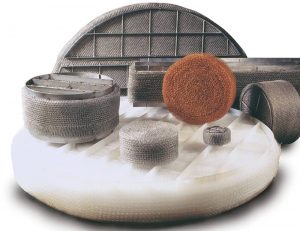Selecting the appropriate demister pad for a specific application involves considering various factors to ensure optimal performance. Here are some key considerations for demister pad selection:
Application Requirements: Understand the specific requirements of the application. This includes parameters such as the gas or vapor composition, operating temperature, pressure, flow rate, droplet size distribution, and potential presence of corrosive or abrasive substances. These factors influence the selection of demister pad type, material, thickness, and design.
Demister Pad Type: There are different types of demister pads available, including wire mesh demisters, fiber bed demisters, and vane pack demisters. Each type has its own advantages and limitations, so select the type that best suits the application requirements. Wire mesh demisters are widely used and provide high efficiency, while fiber bed demisters can handle high liquid loadings, and vane pack demisters offer low-pressure drop and compact design.
Material Selection: Choose a demister pad material that is compatible with the process conditions, including temperature, corrosiveness, and potential fouling or contamination. Common materials for demister pads include stainless steel, high-performance alloys, or special plastics. Consider factors such as corrosion resistance, thermal stability, mechanical strength, and chemical compatibility with the gas or vapor and any liquid contaminants present.
Pad Thickness: The demister pad thickness affects the separation efficiency and pressure drop. Thicker pads generally provide higher separation efficiency but may result in higher pressure drop. Consider the trade-off between efficiency and pressure drop based on the application requirements. Ensure that the selected pad thickness is suitable for the available space and installation requirements.
Efficiency and Capacity: Evaluate the demister pad efficiency and capacity based on the droplet size distribution and anticipated liquid loading. Demister manufacturers typically provide performance data based on laboratory testing or empirical correlations. Consider the expected separation efficiency, liquid removal capacity, and tolerance to liquid loading to ensure that the selected demister pad meets the process requirements.
Pressure Drop: Evaluate the pressure drop across the demister pad to ensure it falls within acceptable limits for the system. Excessive pressure drop can impact overall system performance and require additional energy for gas handling. Manufacturers often provide pressure drop data for different demister pad configurations, which can be used as a guide during the selection process.
